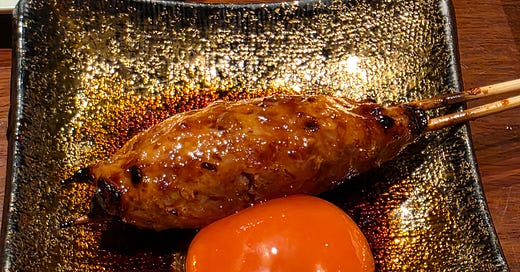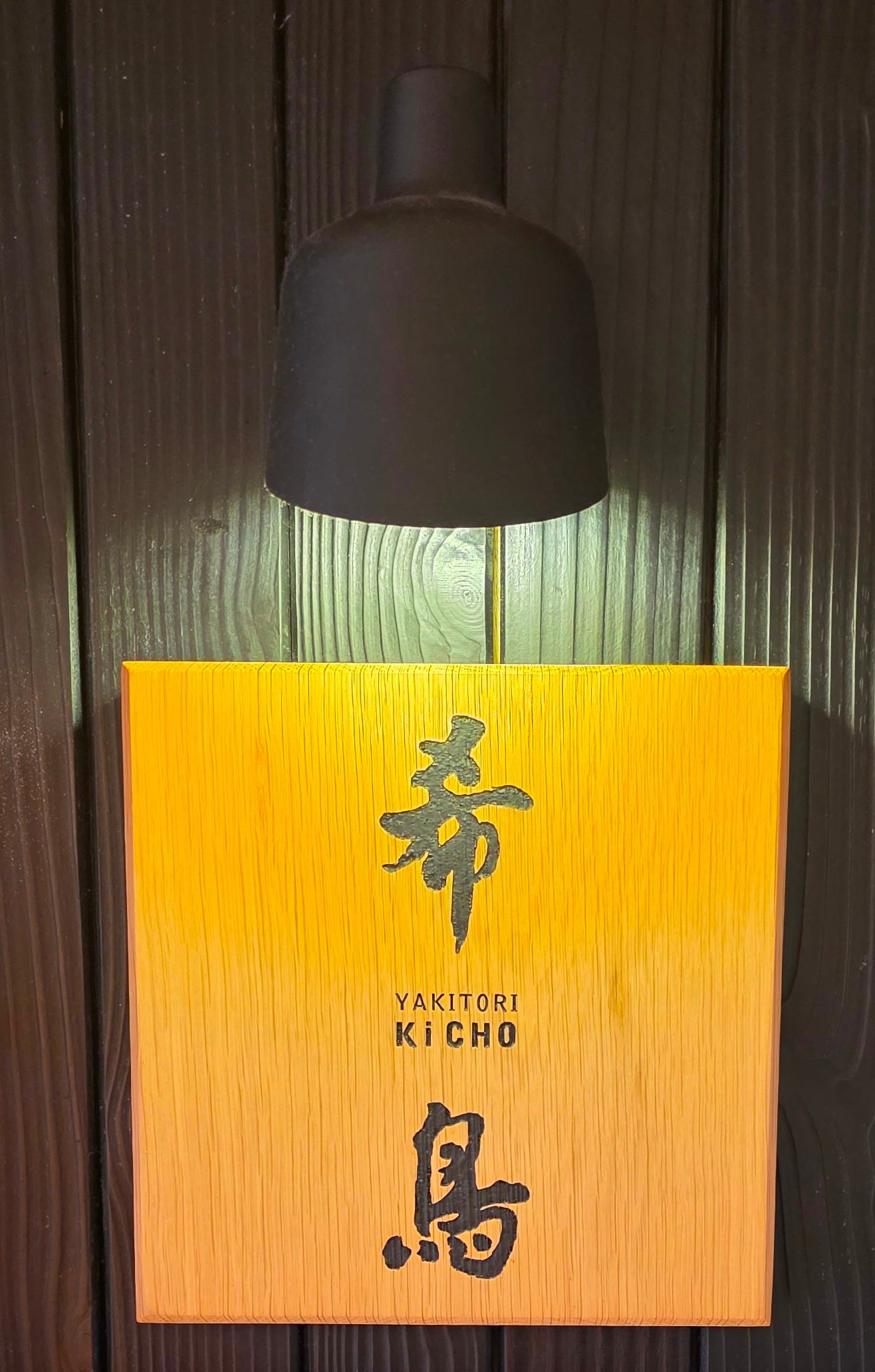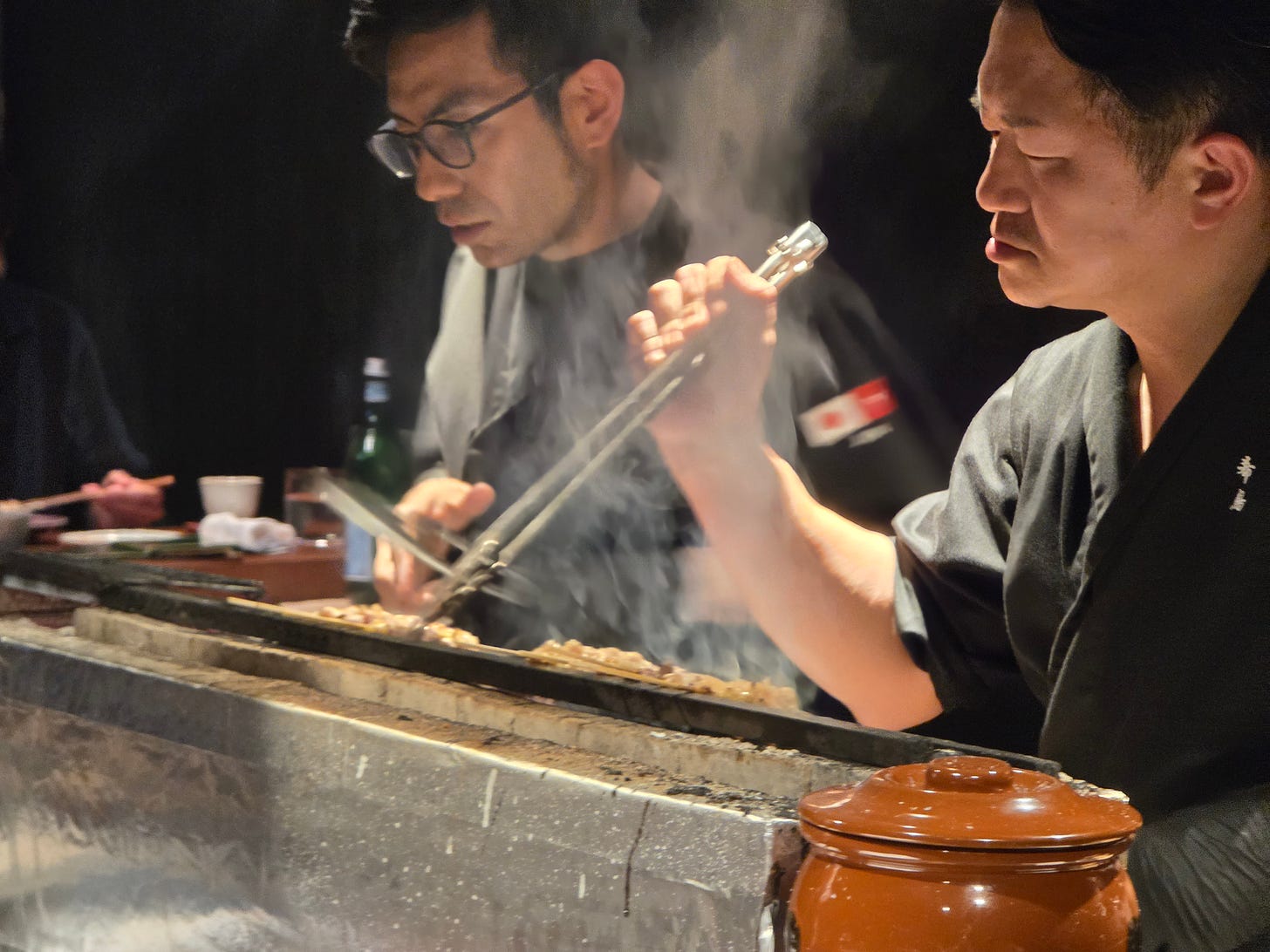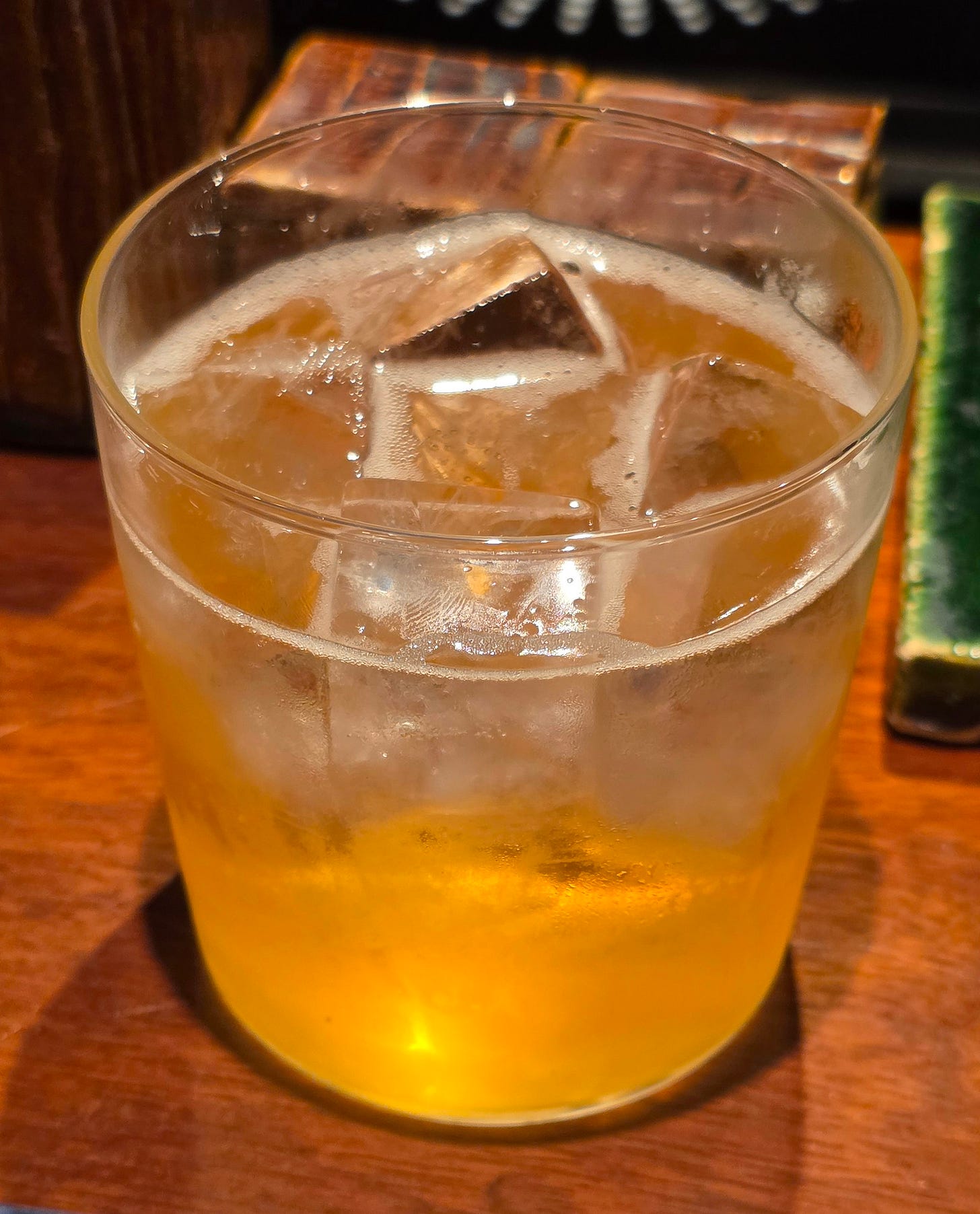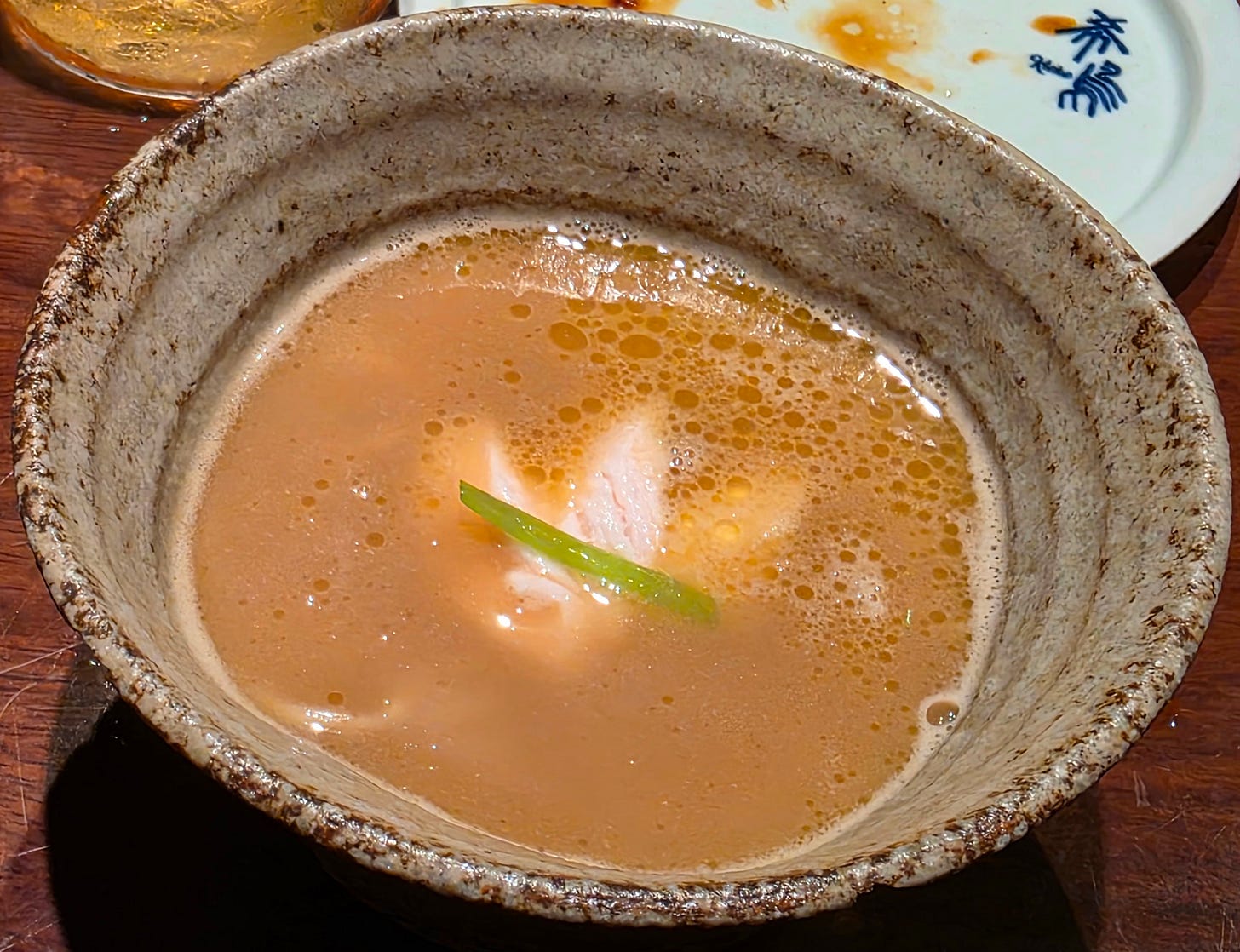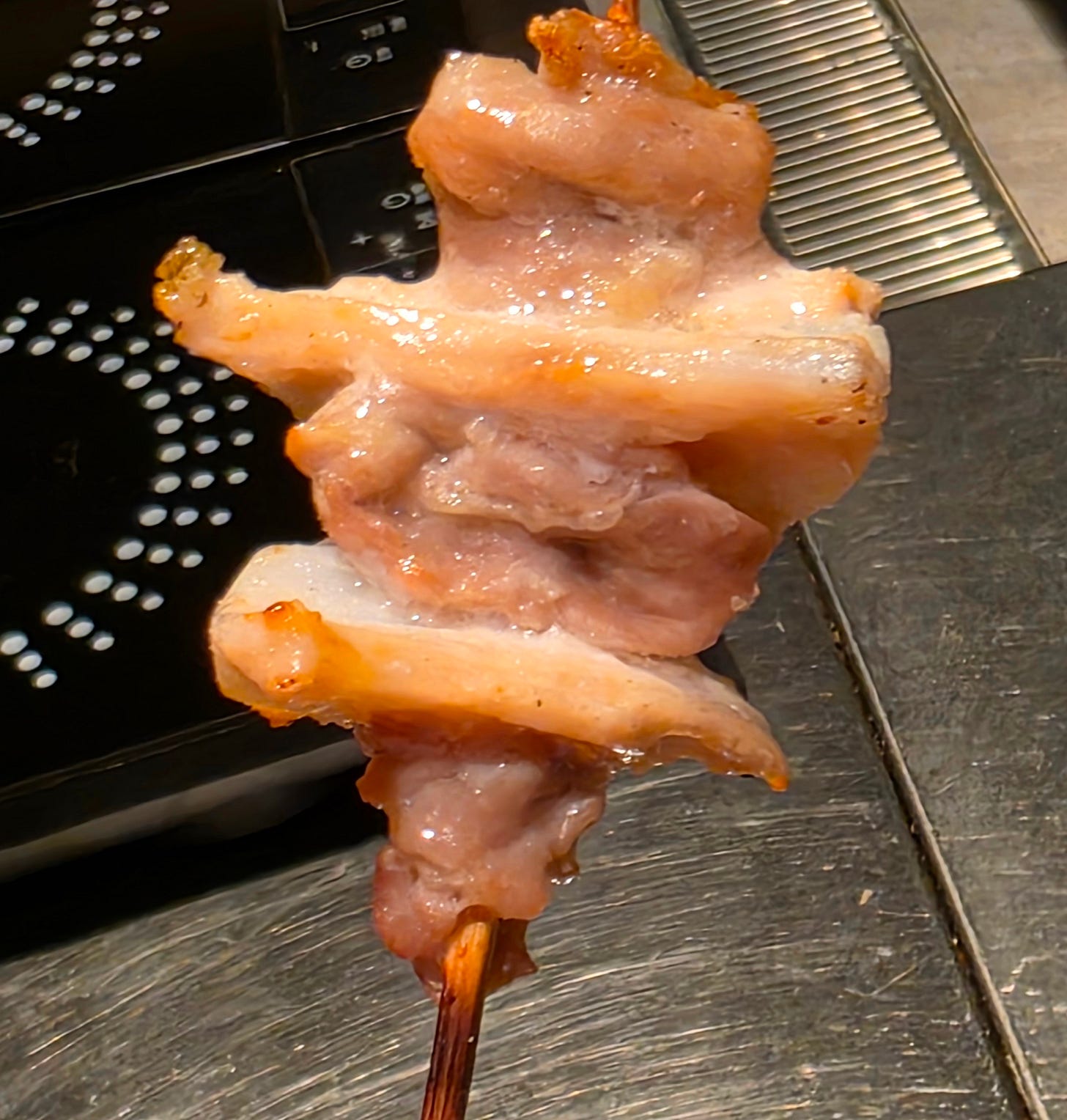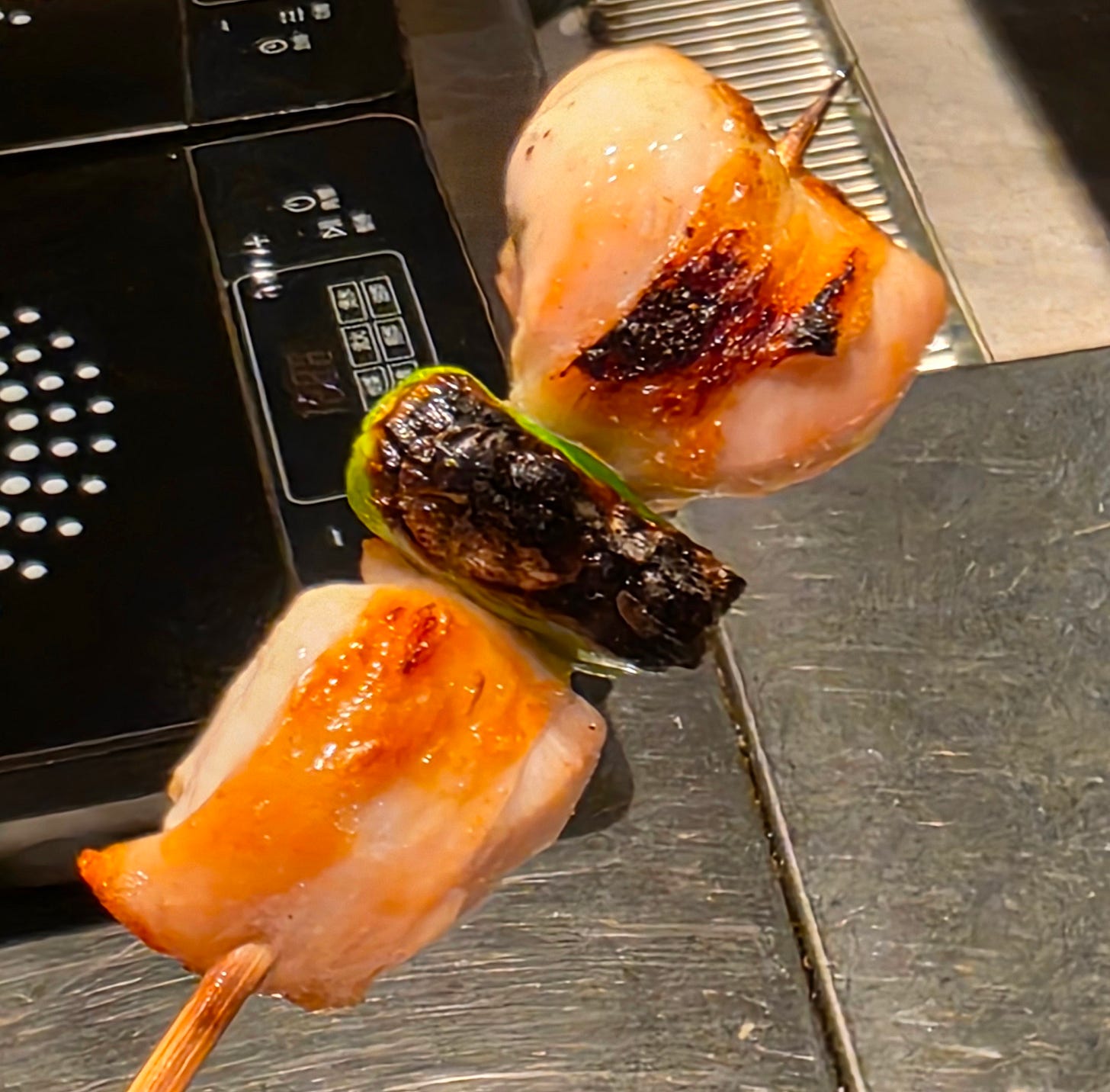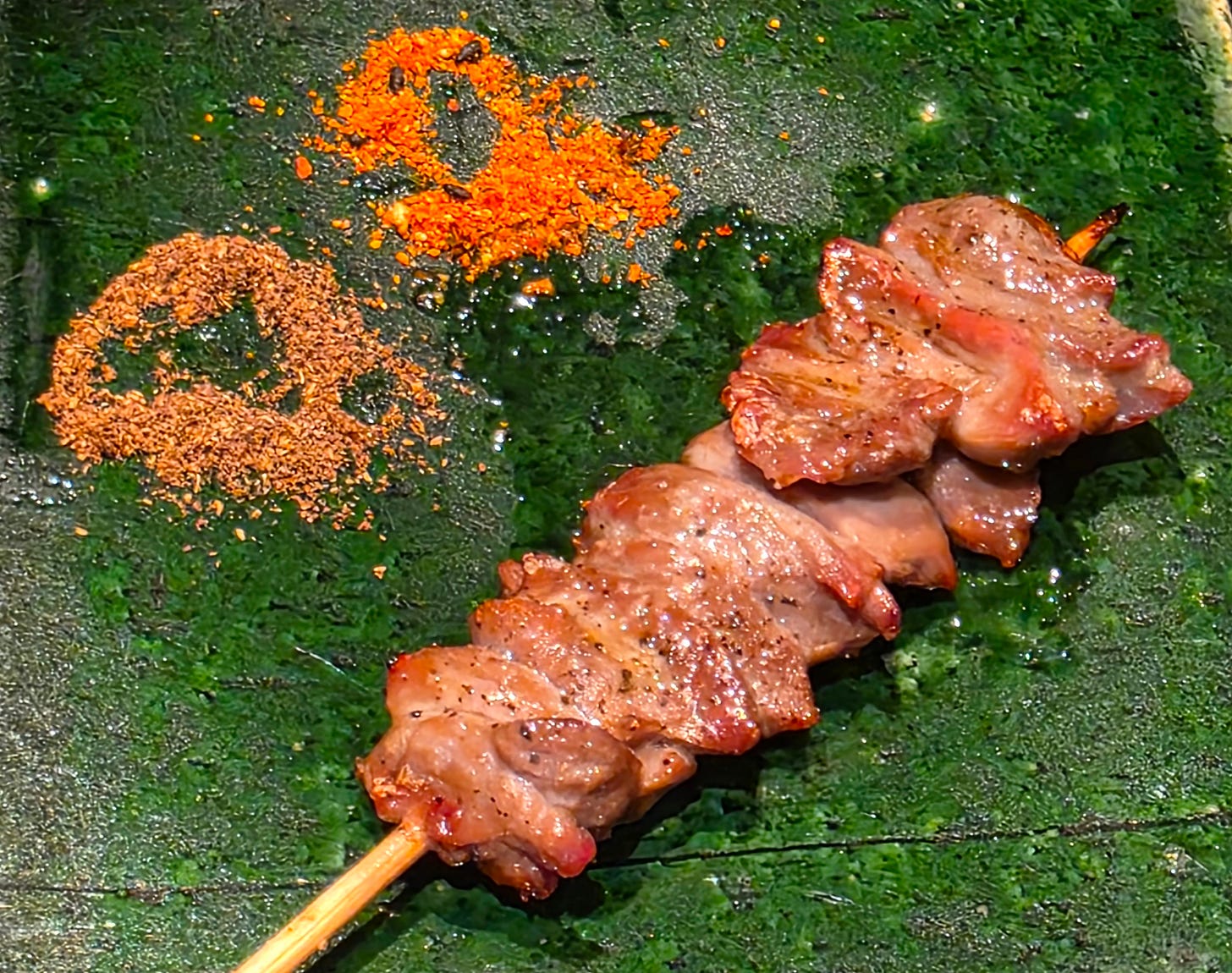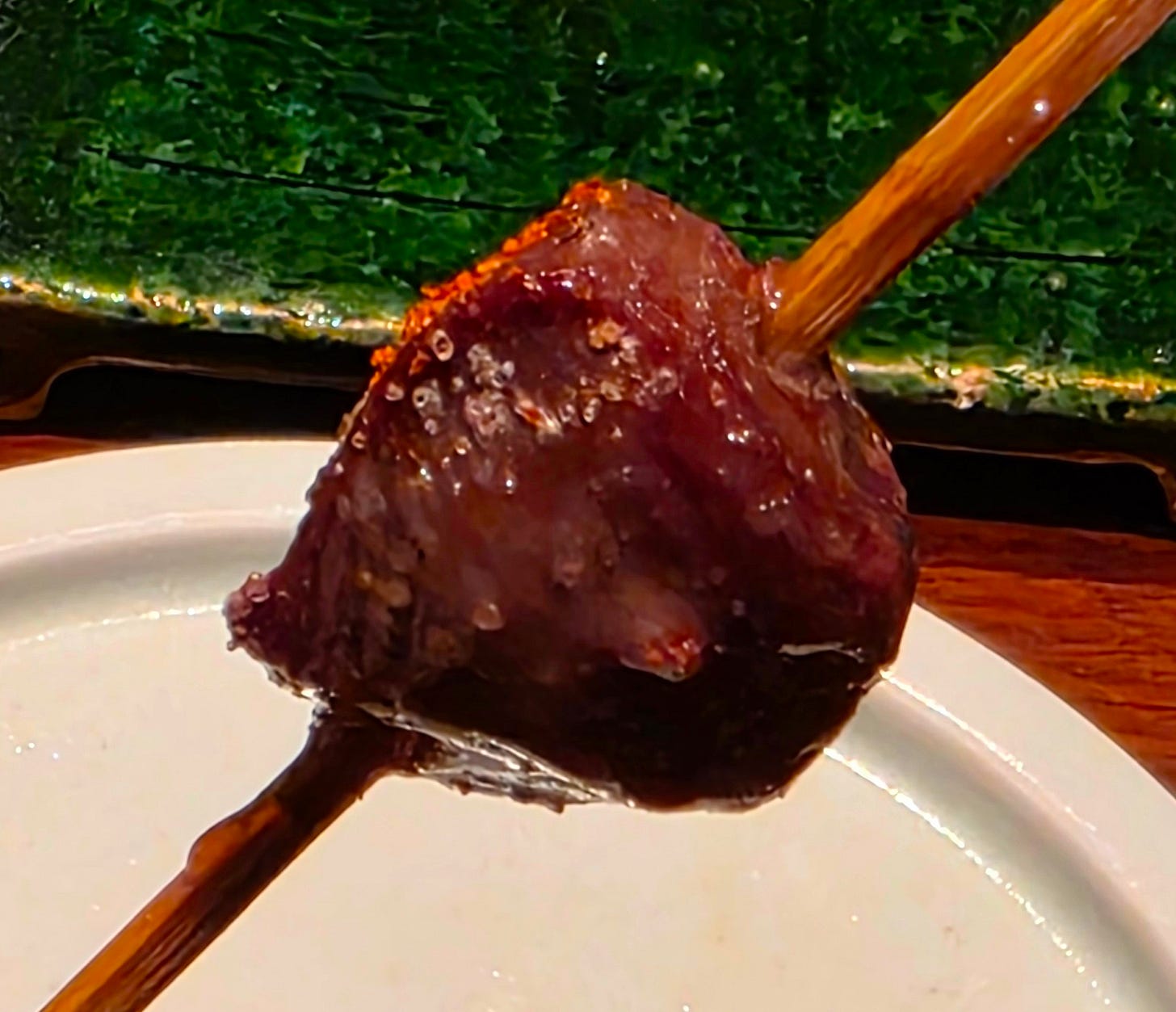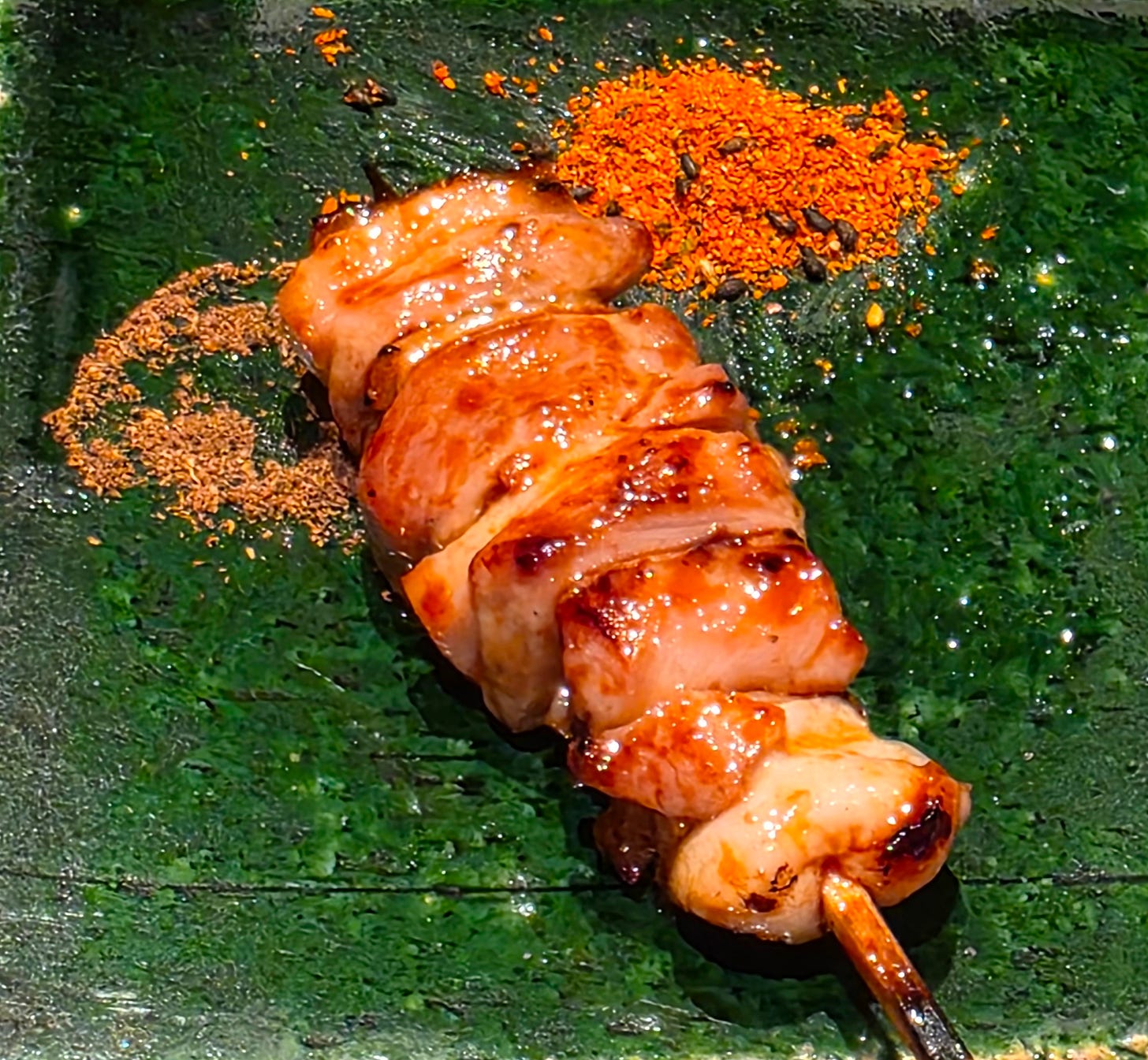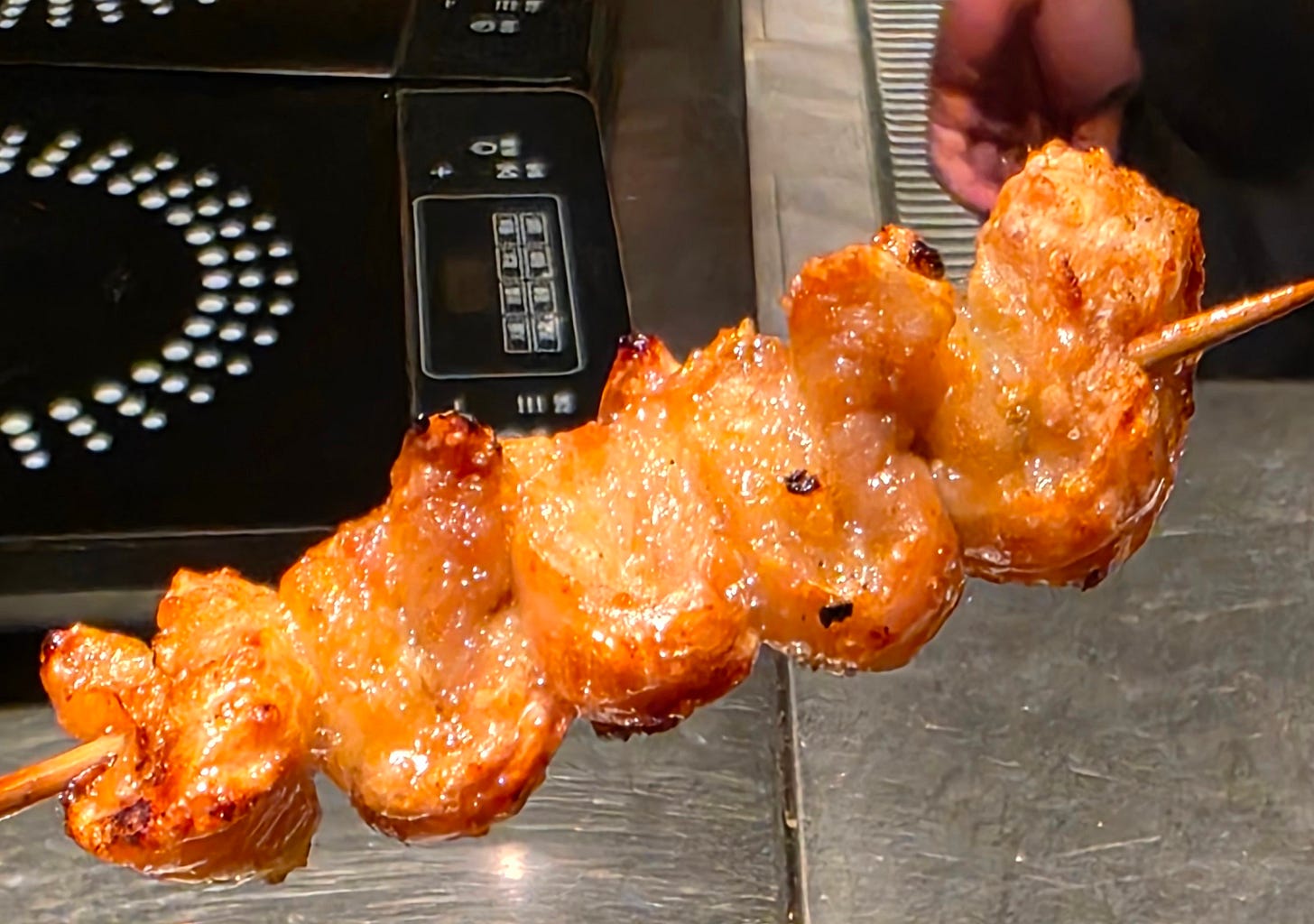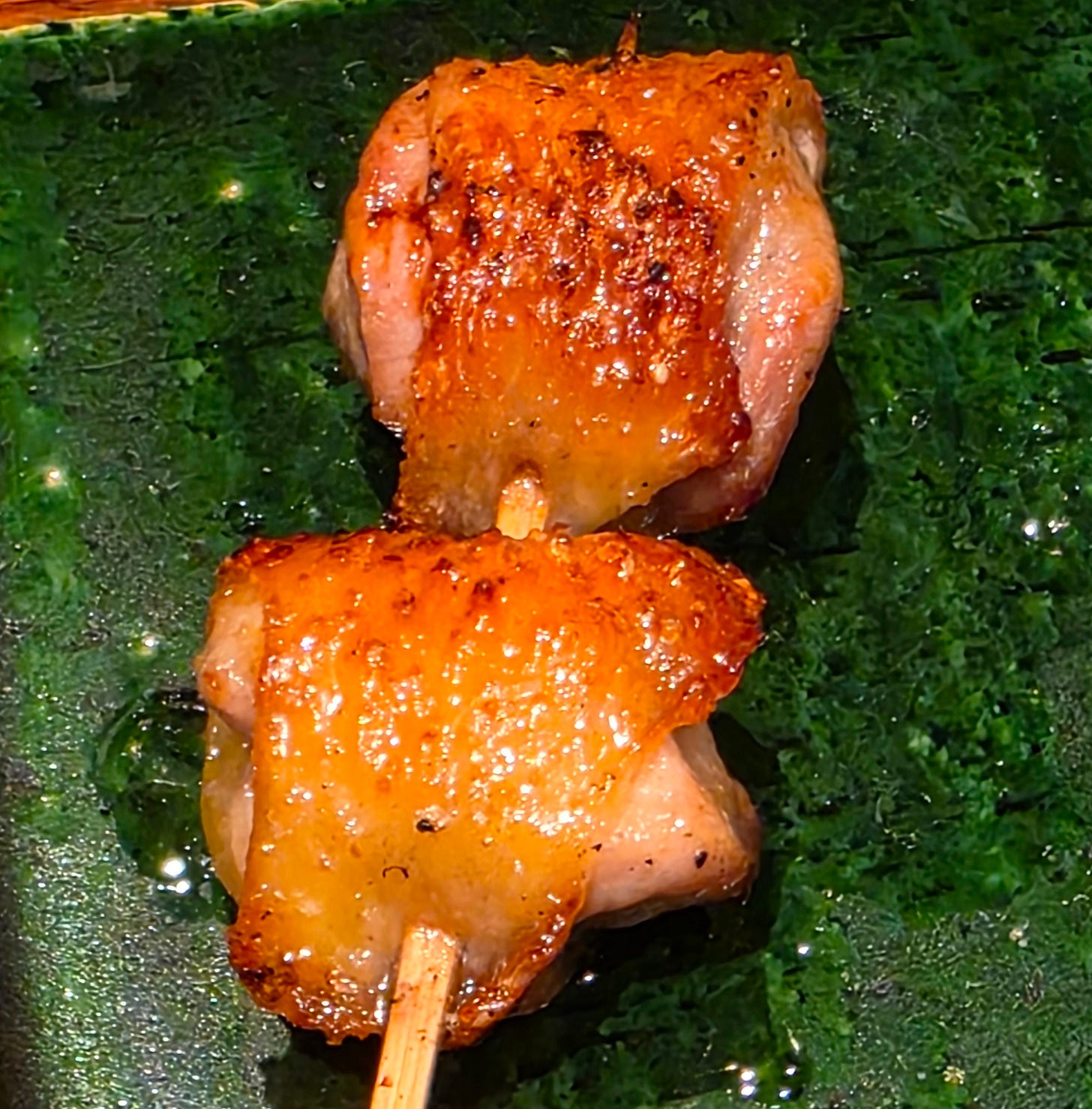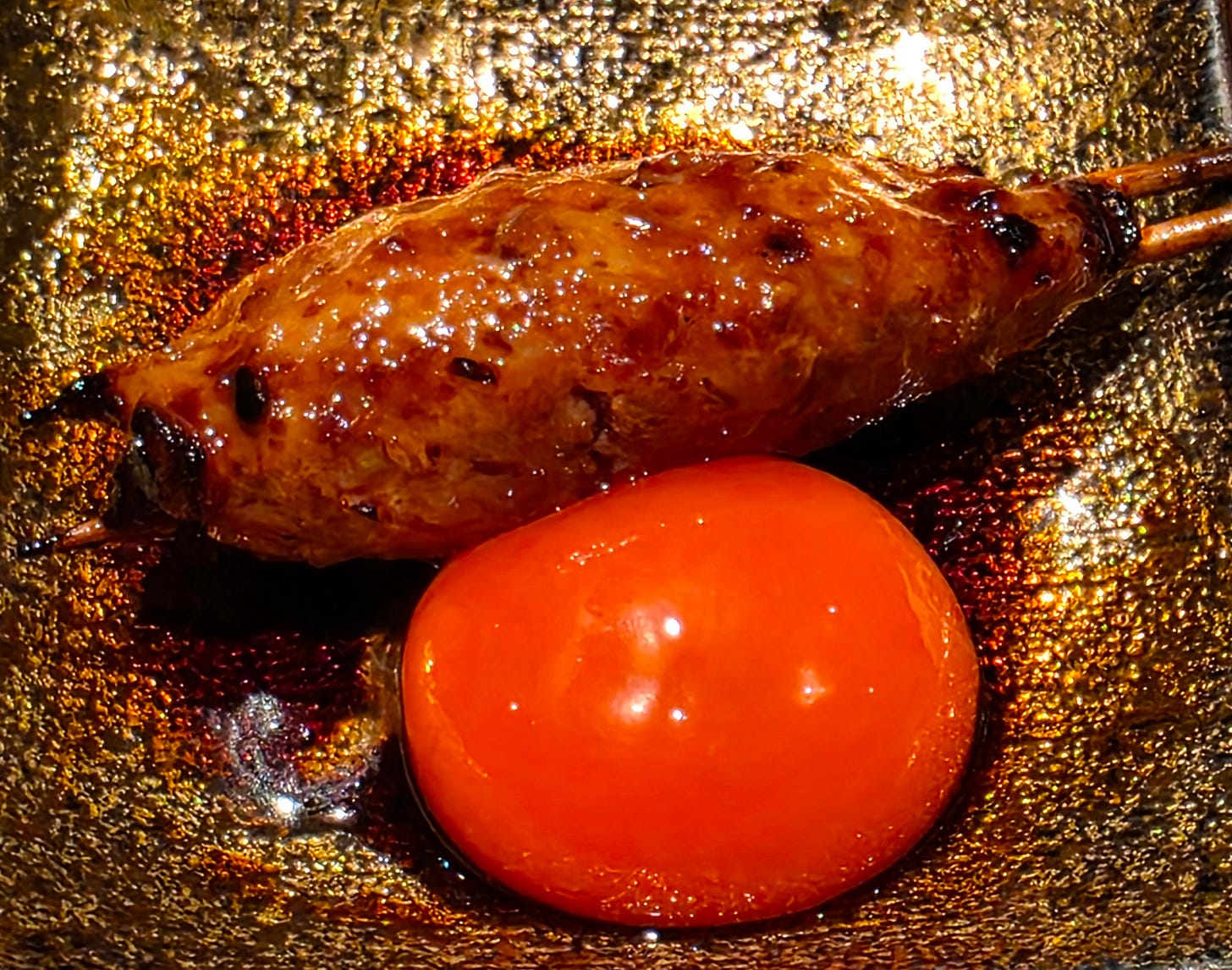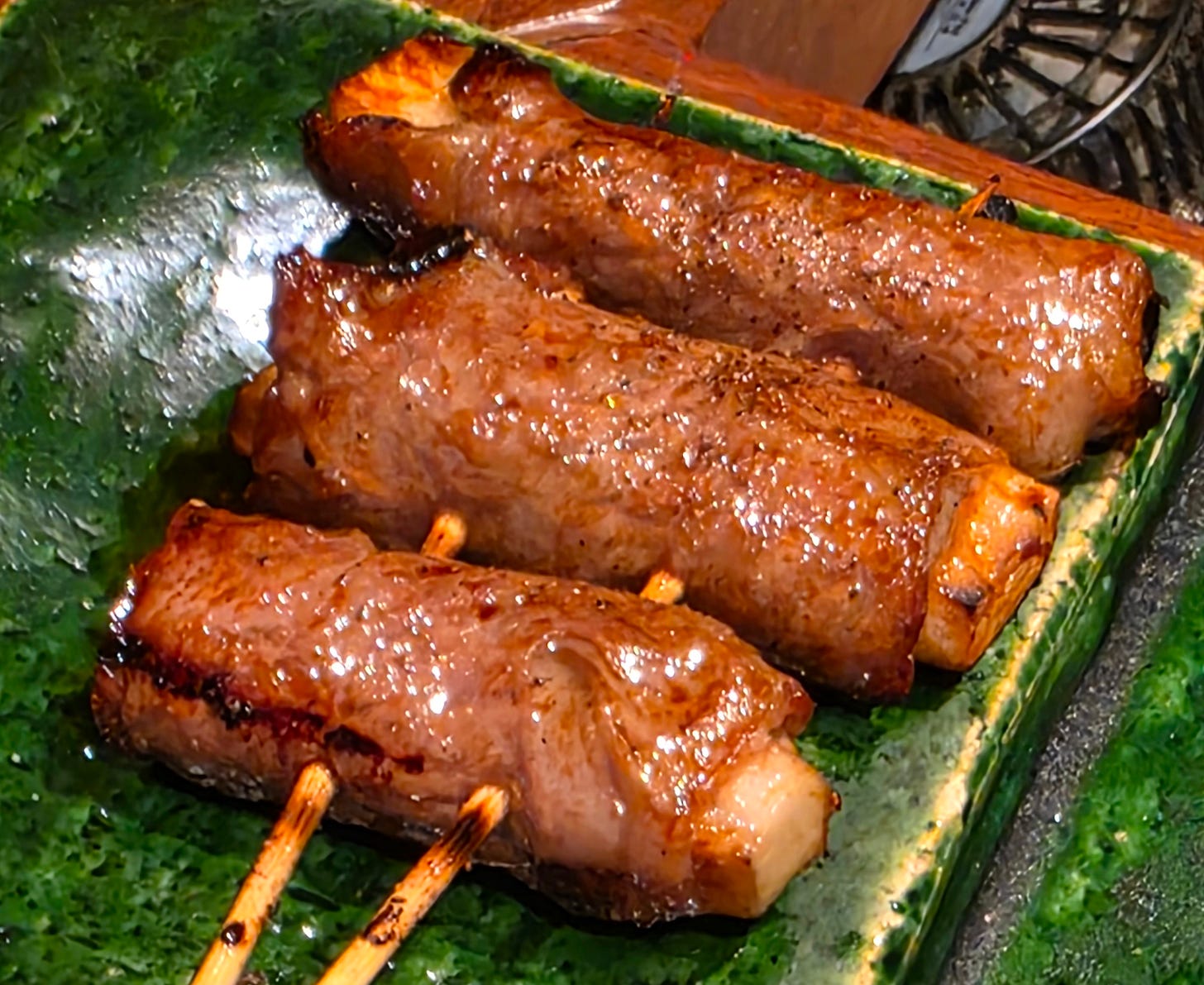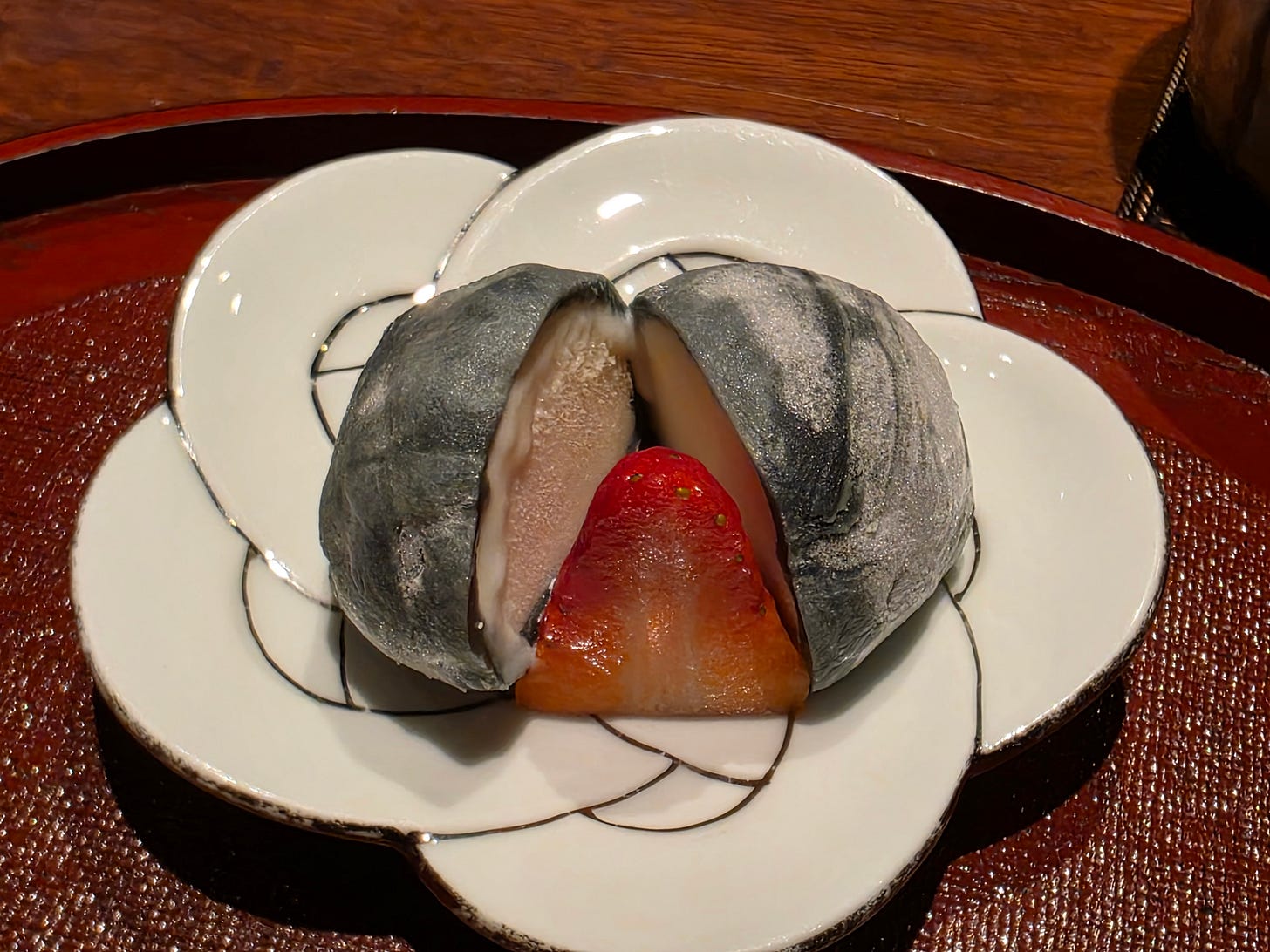In the mood for some Japanese skewers, we decided to try Yakitori Kicho, a relatively new restaurant in Hong Kong specializing in tori kappo (chicken-focused cuisine using every part of the chicken from neck to heart to comb and gizzard). Yakitori Kicho is an import from a chain of famous Yakitori restaurants in Tokyo, with the executive Chef Chikashi Yoshida honing his craft at both the Ebisu and Ginza locations before moving to Hong Kong to open their first international location.
The restaurant uses free-range Kuro Satsuma chickens sourced exclusively from farms in Kagoshima Prefecture. This breed is prized for its high fat content, firm texture, and rich umami flavor, which holds up beautifully whether grilled or even served as sashimi. The chicken skewers are grilled over binchotan charcoal, imparting a distinct smoky aroma to the skewers.
The dining space is intimate, centered around an 18-seat counter, where guests can watch the all-Japanese culinary team, led by Chef Chikashi, in action.
The restaurant specializes in omakase-style yakitori kappo, with 14 and 16 course tasting menus, although we decided to go a la carte and pick and choose from the assortment of available dishes.
As always, I started with a umeshu highball, a simple 1:2 mix of Japanese plum liquor and soda water.
The first dish to arrive was a chicken liver parfait spread on a crispy puffed rice cracker in the shape of a rooster. Neat presentation and the chicken liver parfait is always rich and minerally with a tiny hint of bitter.
The rice cracker it was served on was a typical senbei cracker, with glutinous rice being steamed briefly before pounding into dough, then resting and allowing the gluten to form for a few hours before being pressed into shape and baked. This produces a very light and delicate puffed cracker, that unfortunately gets soggy very quickly on contact with any moisture - say from the parfait.
While I can see that they wanted to present it as a sandwich, the cracker got soggy quite quickly and it lost it characteristic crispiness. I probably would’ve preferred for the parfait to be served on the side, and spreading the parfait on the crackers myself. Not bad nonetheless.
Normally, noodles and rice are left for the end of the meal, but we arrived on a cold, rainy day, and a thick, rich, hot chicken soup sounded amazing. After butchering, the leftover chicken carcasses are slow-cooked for hours to produce a chicken broth which can be ordered by itself, or with with homemade buckwheat ramen noodles. Absolutely amazing, with great mouthfeel, and we ended up ordering multiple orders of the ramen repeatedly throughout the night.
Next came smoked duck breast with okra slices in a thick chilled gelatinous broth and Japanese pepper sauce. Not exactly what I expected. Wasn’t sure if the broth was gelatinous because of the gelatin rendered from the chicken or the natural gelling effect from the okra, or perhaps a bit of both, but really good either way.
The skewers started coming, with one of my favourite coming first - the chicken cartilage (nankotsu) from the keel bone of the chicken. Crunchy, snappy, with a bit of spring, and as always, served with a bit of Japanese shichimi pepper powder to give a bit of kick. Flavor-wise, the chicken cartilage is fairly neutral, with a faint chicken-y essence that takes on the smokiness of the grill and the seasoning. Its appeal lies more in the texture—a playful, almost popcorn-like crunch that contrasts with softer cuts like thigh or liver.
Next, two pieces of chicken breast (mune) separated by a blackened shishito pepper. Not my favourite cut as the lack of protective fat often leaves the meat stringy and dry, but under the watchful eye of the master chef, it was perfectly done - getting crisp and caramelized on the outside, while staying juicy and perfectly cooked on the inside.
An interesting skewer I’ve never seen before, the chicken outer gizzard lining, a byproduct of preparing the chicken gizzard. Lighter and more delicate than the gizzard itself, it was a bit crunchy and minerally.
Next, the chicken gizzard (sunagimo), a muscular organ found in the digestive tract of chickens, used to grind up food. In yakitori, it’s prized for its unique texture—firm, chewy, and slightly crunchy—rather than a strong flavor, which tends to be mild but takes on the smoky, charred notes from the grill and the seasoning. The gizzard is prepared by carefully cleaning it, removing any tough membrane (grilling that separately), and then skewering it in small chunks. It’s typically grilled until slightly crisp on the outside while retaining its juicy, chewy interior - thick, dense and minerally, with the crunch of a generous pinch of salt sprinkled on top.
Chicken thigh skewer (momo), glazed with a sweet soy based marinade. It’s taken from the upper leg of the chicken and is prized for its juicy, tender texture and rich flavor, thanks to a good balance of dark meat and fat. The thigh is deboned, cut into bite-sized chunks, and skewered before being grilled over charcoal in a sweet soy glaze.
Another favourite of mine, crispy folded chicken skin (kawa). It’s typically taken from various parts of the chicken—often the neck, thighs, or back—where the skin is thicker and can hold up to grilling. The skin is skewered, either folded accordion-style onto the stick and then grilled over charcoal until it becomes crispy and golden, with the fat rendering out to give it an irresistible texture and rich flavor.
The chicken oyster, or sot l’y laisse in French (meaning "the fool leaves it there"), is a small, tender, and flavorful piece of dark meat located near the thigh, just above the backbone and close to the hip joint. It’s a roughly oyster-shaped nugget that’s juicy and rich in taste due to its fat content and proximity to the bone.
The chicken oyster’s allure lies in its rarity and perfection—it’s a tiny portion (maybe a bite or two per bird), but it punches above its weight in flavor and texture. In Japan, it’s not always called out by name on menus, as yakitori tends to focus on broader categories like "momo" or "negima" (thigh with leek), but skilled chefs know its value. If you spot "oyster" listed or ask a yakitori master about it, you might get a knowing nod and a perfectly grilled morsel that proves why it’s a butcher’s secret.
A classic loosely packed chicken mince meatball (tsukune), combining thigh and breast meat with a bit of cartilage for crunch and skin for chewiness served with a raw egg yolk. Break the egg, combine with the sweet soy glaze and use as a sticky dipping sauce for the meatball. A particularly difficult skewer to master keeping its loose texture together without falling apart while cooking slowly to ensure it cooks through.
Tsukune fits into yakitori’s beak-to-tail philosophy by using scraps or less uniform cuts of meat that might not work as standalone skewers. It’s a creative way to elevate minced chicken into something flavorful and satisfying, often served as a hearty part of a classic yakitori meal alongside beers or sake.
The final skewer, thin slices of wagyu beef wrapped around slices of king oyster mushroom and grilled over the charcoal. Not a classic yakitori dish, as yakitori focuses around chicken. Perhaps a Hong Kong adaptation more akin to enoki beef rolls.
Finally, steamed Japanese rice with minced chicken, topped with a raw egg, shaved black truffle and a bit of caviar. Break the egg yolk and mix everything together into a gooey rice mixture and eat. Delicious.
Dessert was a mochi daifuku, with a scoop of sea salt ice cream, wrapped with a sticky rice mochi coloured with charcoal. A cold adaptation to a classic Japanese dessert.
Overall, pretty good. Exactly what I would expect at a good yakitori restaurant. In retrospect, we probably should’ve just gone for the tasting menu which presented better value, but we weren’t feeling adventurous enough to try the chicken sashimi and wanted multiple orders of the amazing chicken broth on a cold and rainy day. Pretty good, and somewhere I would definitely return.
Total damage: 3300 HKD/3 people.

